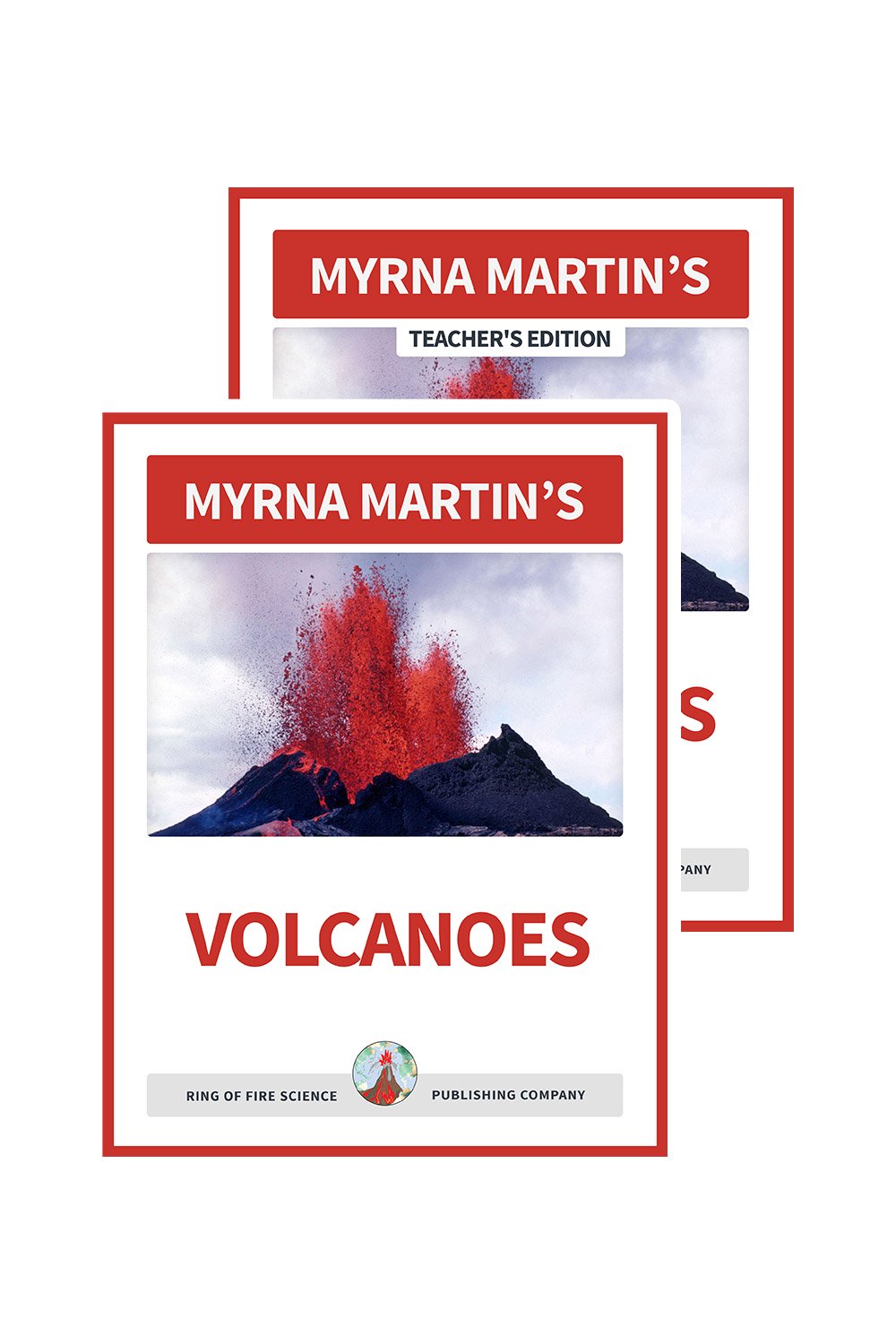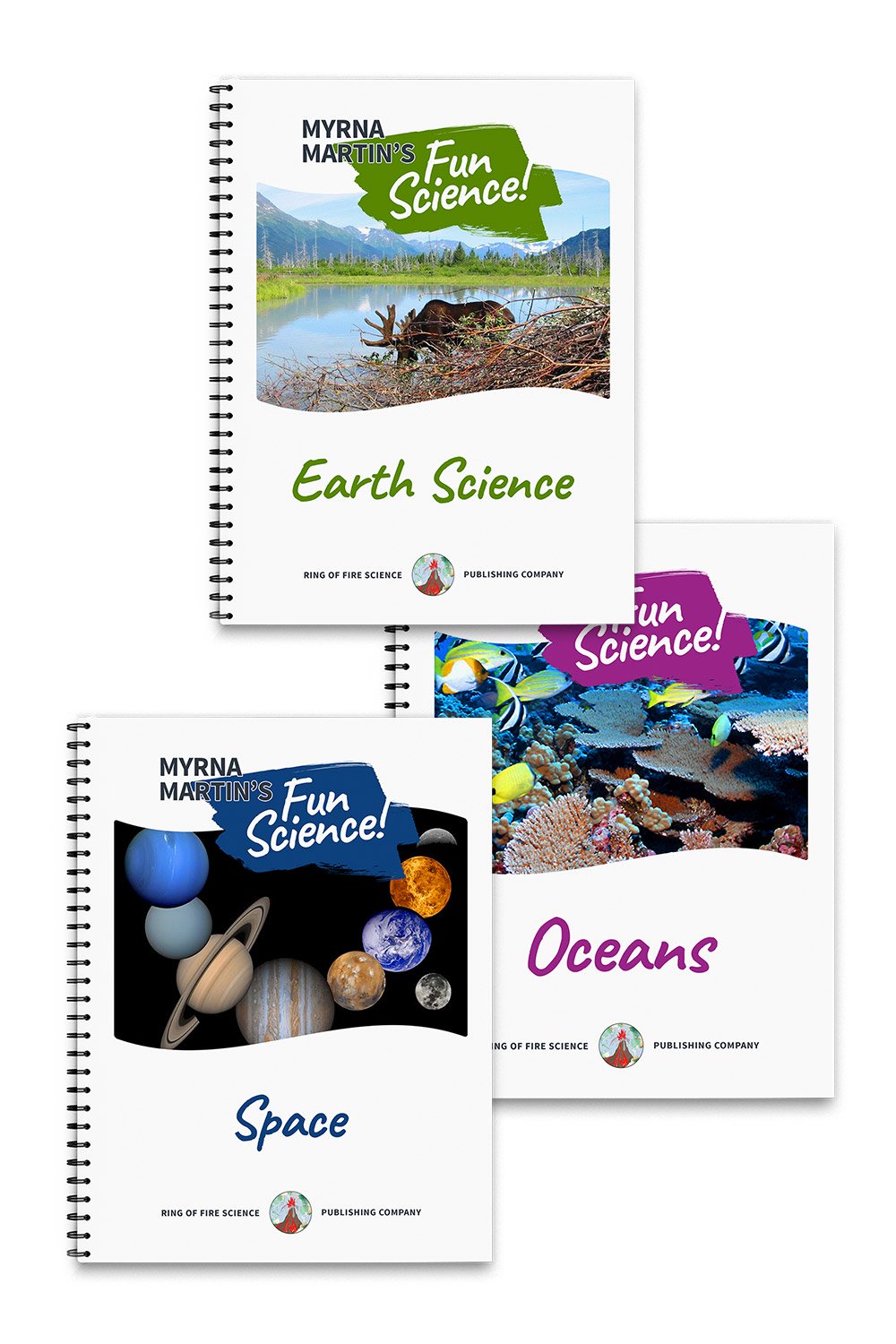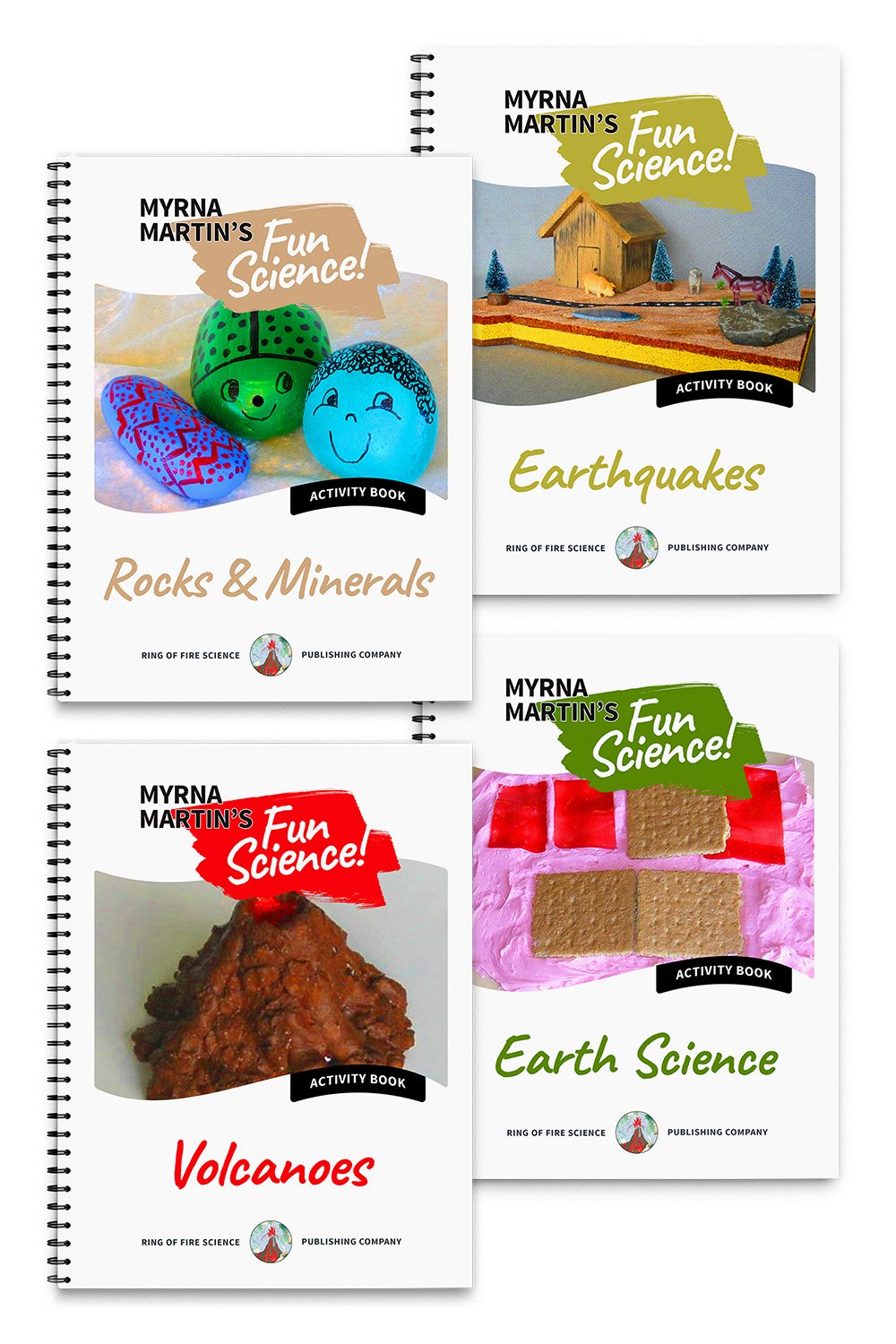Divergent Plate Boundary
Separating Seafloors
A divergent plate boundary forms when two crustal plates are separating. Most of these boundaries are found at the bottom of the oceans. Between the two plates is a rift valley. Scientists have found that lava on both sides of a rift valley are the same age. They use the paleomagnetism in the rocks to determine their age.
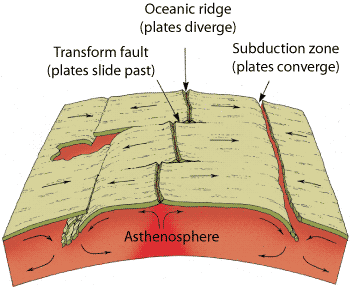
Paleomagnetism
Paleomagnetism is the way crystals of magnetite line up as the molten rock crystallizes as it cools. Today the tiny magnetite crystals all line up with the North Pole. In the past they have lined up with the South Pole at irregular intervals. The crystals in the rocks form a zebra like pattern that is the same on both sides of spreading ridges.
Lava formation on ocean floors
Lava flowing out of vents in a rift valley originated in the upper mantle. Basalt that flows out of the vents contains ferromagnesian minerals. These minerals contain both iron and magnesium that are much heavier than quartz and feldspar found on the continents in granite. The oceanic crust formed at a divergent plate boundary is much thinner than continental crust. The average thickness of continental crust is between 7 and 10 km thick.
Pillow basalt
The flowing lava forms pillow-like structures that cover the ocean floors. The pillow basalt forms great mountain chains that zigzag through all the world's oceans. They are the greatest mountain chain on Earth. The highest points in the mountain chain are at the divergent boundaries where the rift valleys are located. The mountains slope downward from there.
Recycling the seafloor
As new seafloor is being created between separating plate in rift valleys it is being destroyed on the other side of the plate. The leading edge of the plate is forced beneath either a continental plate or another oceanic plate that is not as heavy or cold. This creating and destroying of basalt on ocean floors is why they are younger than continental rocks that are not destroyed in convergent boundaries.
More Facts About Earth Links
KIDS FUN SCIENCE BOOKSTORE
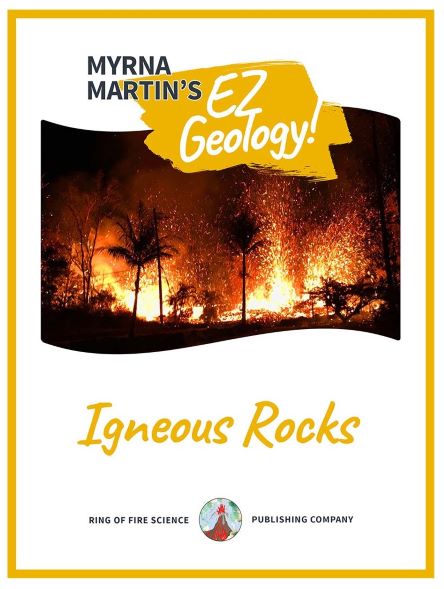 |
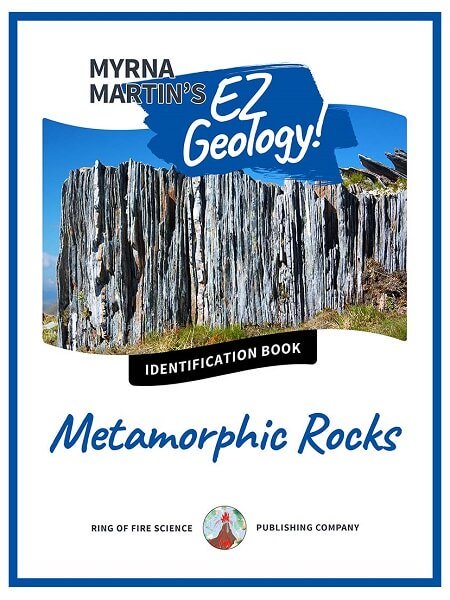 |
Check out Myrna Martin's award winning textbooks, e-books, videos and rock sets. The Kids Fun Science Bookstore covers a wide range of earth science topics. Click here to browse.
Sign up to our monthly newsletter and receive our FREE eBook containing 3 fun activities that don’t appear in any of our other books!
The Kids Fun Science monthly newsletter will include the following: current events, weird and fantastic facts, a question of the month, science trivia and the latest new content from our website.
We respect your privacy and you can be assured that we will never share your email address or use it for any other purpose than to send you our newsletter.



